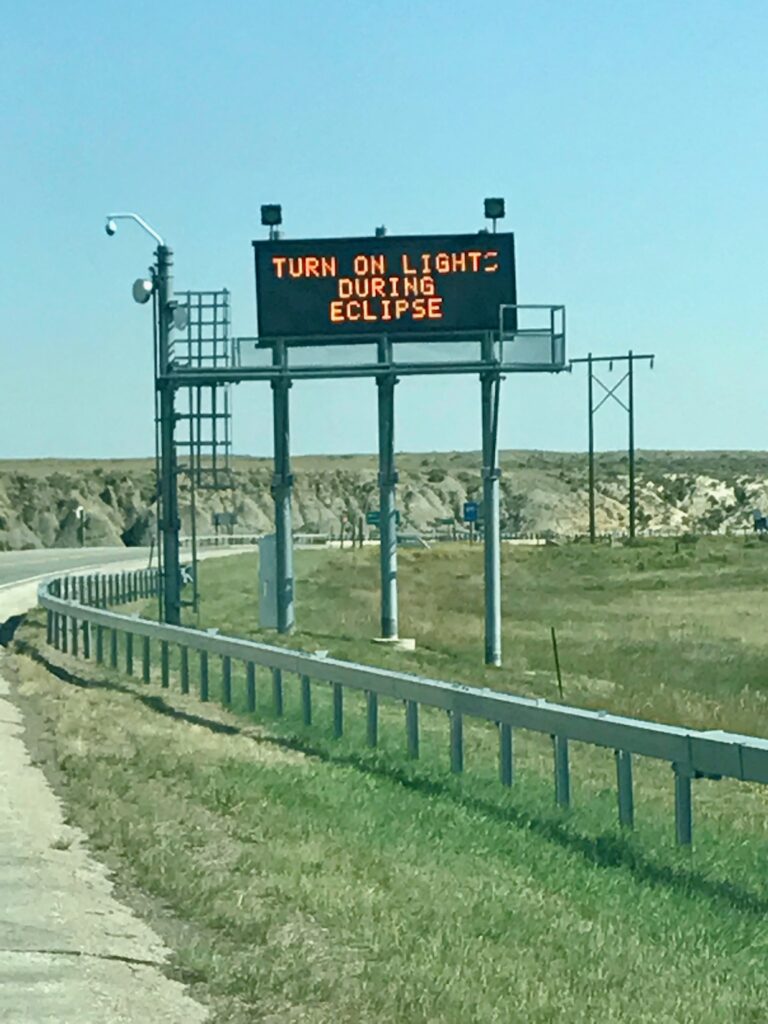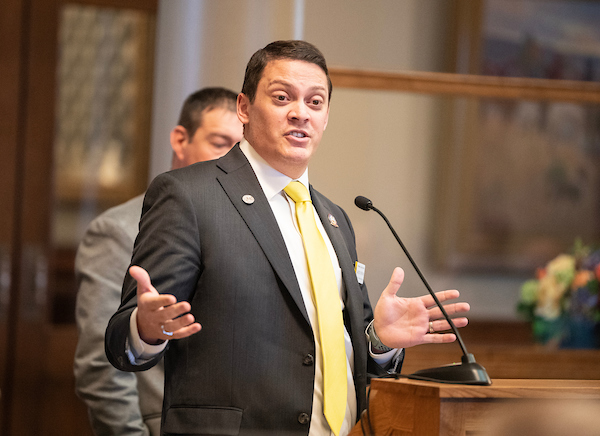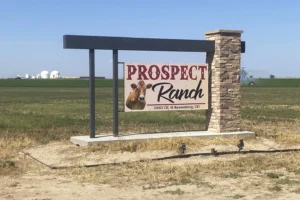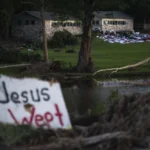High Winds and Interstate Blow Overs
Wyoming Department of Transportation plans to implement weight-specific restrictions along the state’s windiest roads
- Published In: Other News & Features
- Last Updated: Sep 02, 2023

Pictured above are examples of signage listing specific weight restrictions, which WYDOT plans to post over Wyoming interstates. (Screenshot via Wyoming Department of Transportation documents)
By Carrie Haderlie
Special to the Wyoming Truth
In an effort to reduce blow overs, fatalities and road closures, vehicles will soon be restricted based on actual weight in times of high wind.
The Wyoming Department of Transportation is using University of Wyoming research characterizing blow over risk to create a system by which to post restrictions on its dynamic message signage across the state. But implementation is not date-certain, Vince Garcia GIS/ITS program manager for WYDOT, told the Wyoming Truth.
“I wish I could give you a hard deadline,” Garcia said, noting he hopes new messaging will appear by January 2024. “The process is going to take us some time to develop all the software necessary to push those [messages out].”

Signage will list specific weight restrictions and closures, and a second scrolling screen will list actual wind speeds.
“The signs we will post … will be much more specific than just a general closure to light and high profile vehicles,” Garcia said Thursday during a Joint Transportation, Highways and Military Affairs Committee meeting in Casper.
“We will state things such as, ‘The road is closed to high profile vehicles under 30,000 pounds,’ and we will use a second page on the dynamic messaging signs to say that the wind gusts are currently 50 miles per hour or something like that,” he said.
Garcia presented the state agency’s plan to lawmakers during a discussion about increased penalties for driving through “light and high profile” vehicle closures. WYDOT Director Darrin Westby called the plan “an innovative way for us to try to maximize the opportunity for open roads, versus closing them due to wind.”
Higher penalties, specific weight guidelines
While WYDOT does not need legislative approval to set weight limits or adapt its messaging systems, elected officials also are discussing increased penalties for driving through closures. They amended a bill draft entitled “Light and high profile vehicle closures” to include a $2,500 fine and a stipulation that a second violation would result in the “disqualification for one year of a CDL license in Wyoming.”
“I like the increased fines, [and] I like the idea that if you are caught with this twice, you are disqualified to drive in the state,” Transportation Committee Co-Chairman Landon Brown (R-Cheyenne) said Thursday.
The messaging plan and increased penalties follow months of discussion regarding blow overs, closures and crashes along Wyoming’s roadways, specifically along I-80 and I-25. High wind blow overs are on the rise, according to WYDOT, as strong wind events increase in intensity and frequency and tractor trailers become lighter for fuel efficiency. Trucks often come into Wyoming fully loaded, but leave Cheyenne distribution centers as empty trailers. Crashes involving lighter boxes require more clean-up time, according to WYDOT.
TaLise Hansen, Legislative Service Office staff attorney, told lawmakers that no other state statute defines what a “light and high profile vehicle” is, leading to ambiguity. WYDOT first implemented closures to undefined “light and high profile vehicles” in 2011, Garcia said.
“What [people] are asking is, ‘What type of vehicle will blow over?’ It is very complex,” Garcia said.
Vehicle weight factors in, but so do variable wind gusts, wind direction, roadway geometry, road surface condition, vehicle speed and driver’s experience, Garcia said.
“This is not an exhaustive list, but it’s a pretty good list to explain why it is difficult for us to define,” he said.
Proposed changes, where they will happen and why
WYDOT will leverage UW research to enhance its operational systems, utilizing current capabilities to provide expected wind closures based on weather forecasts and posting those in various places, including on the state’s Commercial Vehicle Operator Portal.

“We will create an option for drivers to self-evaluate blow over risk, based on their vehicle, and will show windows of opportunity for drivers to get through difficult zones,” Garcia told the committee.
Specific information, including road closures to specific weight of vehicles, will also be posted in three-hour increments for up to 24 hours. In addition, drivers will receive a go-ahead if their vehicle meets certain criteria or will be told that they are not allowed to drive on.
“We will also create an operational system to help improve enforcement,” Garcia said. “I’d almost turn that into somewhat self-enforcement, as well as [allowing] our troopers to” enforce closures.
“No longer are we going to be doing general closures to light, high profile vehicles,” he said. “We are going to be doing closures to specific weights of vehicles.”
In the beginning, the new system will be implemented only on interstates, where WYDOT has an adequate density of dynamic messaging signs, plus real-time weather sensors.
Sen. John Kolb (R-Rock Springs) asked how information will be conveyed to non-English speaking drivers. Garcia replied that messaging must be in English because of the character-based technology. However, WYDOT has completed analysis through its mobile app to determine what language its users speak, he said, and the majority speak English.
“There are about 20% using Spanish, and a very small percentage using Russian,” Garcia said. “It is not as great a number of languages as I’d anticipated, based on our mobile app.”
Rep. Ryan Berger (R-Evanston) asked if there are more blow overs from commercial vehicles as opposed to trucks pulling fifth wheel trailers.
“Absolutely. The commercial vehicles … are a big target,” Garcia responded.
Sheila Foertsch, president and CEO of the Wyoming Trucking Association, said she was “very impressed” with WYDOT’s plan.
“I think this will go a long way to giving carriers and drivers a new tool to help them ultimately to make that decision [to stop or continue driving],” she said Thursday.
Drivers receive so much information, she continued. Sometimes, they come to Wyoming from other states that also warned of high winds.
“They go through a state that is also giving them information that, ‘High winds, be careful’,” she said. “Well, they get that in one state, and they come to Wyoming, and we’re saying high winds. OK, it is a little bit different on I-80 than the state you just came through.”













